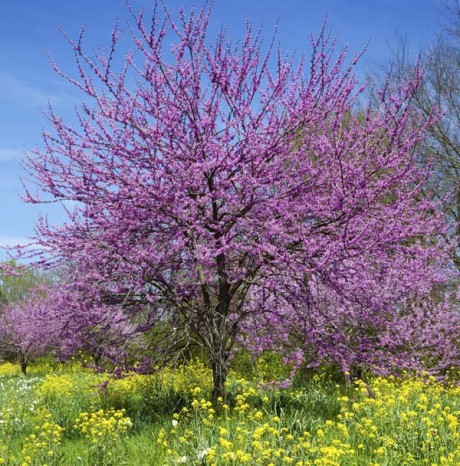Planting a tree
Consider its purpose, plant it properly
By Amy NeyAre you considering adding trees to your landscape? To choose the right tree for your site, you need to evaluate several characteristics.
Selection
Imagine the tree full grown—is there enough height and width for the tree crown, as well as underground space for the roots? What is the soil composition, pH, and how well does it drain? How much sun does the site receive, and when? What hardiness zone are you in?
Your local Cooperative Extension agent can assist you in these questions and in collecting a soil sample for free analysis. More information about plant hardiness zones can be found at garden.org/zipzone
Your purpose for the tree will help you choose a specific species. Tall deciduous trees which shed leaves seasonally have wide crowns that provide both summer shade and winter sun. For privacy and windbreaks, low-branching conifers (needle-bearing trees) are the best choice. Small, narrow-crowned trees form an effective boundary line.
For aesthetic purposes, choose a tree that contrasts with its surroundings in form, size, color or texture. Trees with fruit, nuts or berries are beneficial to people and wildlife.
Inspection
Inspect each tree before buying it. Make sure it is healthy, without broken branches, has good form and unbroken bark. Look at the branching pattern — trees with numerous branches originating from one area may look full, but can be a problem as the tree grows and the branches compete. The tree will not change form and shape as it grows; the branches will merely elongate and thicken. Ideally, branches should 12 inches apart and at an angle of 45 degrees or greater.
There are three types of trees available: container-grown, with the root ball enclosed in a pot; balled-and-burlapped, with the root ball dug from the ground and wrapped in burlap; and bare-root, which have no soil on the root system. Each should have healthy white roots. Roots on a container-grown tree should not be circling the root ball inside the pot. The trunk should be centered in the root ball if covered in burlap. Roots should be moist and flexible if bare-root
Proper planting
It’s important to plant it properly. Dig a hole as deep as the root ball, but 2 to 3 times as wide. Loosening soil around the hole helps to encourage roots to grow away from the tree.
Remove the tree from the container and make several vertical cuts along the root ball to sever any circling roots. Burlapped trees may have nylon straps to remove or a wire basket to cut after placing in the hole. Make sure the tree is straight and level. The trunk flare (the cone where the roots spread away from the tree stem) should be visible above the ground when done.
Use the original soil to loosely backfill the hole, and then water the tree into place. A layer of mulch 2 to 4 inches thick will help retain the necessary moisture — about an inch of water every week or so, but keep the mulch away from the trunk to keep it dry and protect from disease and insects. Most trees do not need to be staked. If the trees do, remove all staking materials within one year of planting.
-
Share this story:




